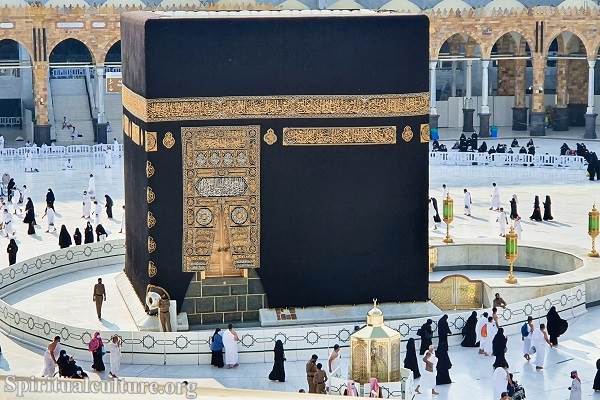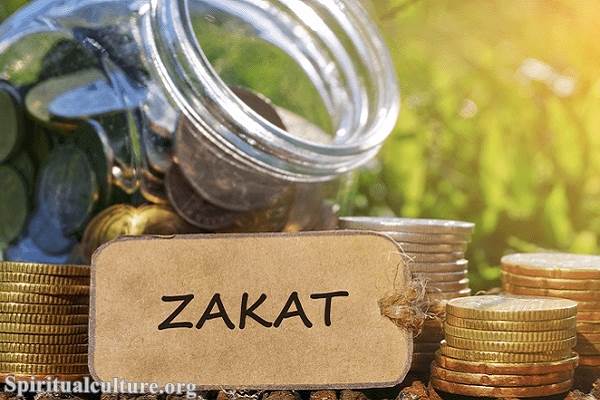Islam, one of the world’s major religions, is rich with symbolic meaning and cultural depth. While it may seem that Islam has a single, universally recognized symbol — the crescent and star — the reality is that Islam is represented by a variety of symbols, each with unique historical, cultural, and spiritual significance. These symbols serve to represent the core tenets of the faith, as well as to reflect the diverse traditions of Muslim societies across time and geography.

In this article, Spiritual Culture will explore the various symbols associated with Islam, including key visual and abstract symbols, colors, animals, and their cultural contexts. We’ll also dive into the historical and contemporary uses of these symbols, examining how they have shaped and been shaped by Islamic history, art, and society.
Key Islamic Symbols
Crescent and Star
The crescent moon and star are perhaps the most widely recognized symbols associated with Islam today, especially in the West. This iconic duo is often seen on the flags of many Muslim-majority countries, including Turkey and Pakistan, and is used in mosques, Islamic centers, and religious publications across the globe. However, it is essential to understand that the crescent and star are not mentioned in the Quran or the Hadith, the two primary sources of Islamic teachings.
Historically, the crescent and star were symbols of power and authority in the Byzantine and Ottoman Empires, predating Islam by centuries. The crescent moon has been a symbol in various cultures representing fertility and the lunar calendar, both of which are important in Islamic tradition. The star, often interpreted as a five-pointed symbol representing light, guidance, or the Five Pillars of Islam, was later added. The adoption of the crescent and star by the Ottoman Empire helped establish it as a symbol of Islam, even though its origins are secular.
Today, despite its widespread use, not all Muslims or Islamic scholars accept the crescent and star as a religious symbol, emphasizing instead the importance of the word “Allah” or Quranic calligraphy in representing the faith.
Five Pillars of Islam
While not a visual symbol in the conventional sense, the Five Pillars of Islam serve as a foundational “symbol” of the Islamic faith. These pillars represent the core principles that every practicing Muslim must follow: Shahada (faith), Salat (prayer), Zakat (charity), Sawm (fasting during Ramadan), and Hajj (pilgrimage to Mecca).
- Shahada – The declaration of faith in the oneness of God and the finality of the Prophet Muhammad’s role as God’s messenger.
- Salat – Performing the five daily prayers, which are symbolic of the Muslim’s submission to Allah.
- Zakat – Giving charity or alms to the needy, symbolizing the redistribution of wealth and social justice.
- Sawm – Fasting during the holy month of Ramadan, symbolizing purification, self-discipline, and empathy for the less fortunate.
- Hajj – The pilgrimage to Mecca, symbolizing unity and equality before God.
These pillars are represented in Islamic art and calligraphy, and though they are not depicted in a specific emblem, they are symbolically interwoven into the fabric of daily Muslim life.
Shahada (Islamic Declaration of Faith)
The Shahada is the Islamic declaration of faith, stating, “There is no god but Allah, and Muhammad is His messenger.” This phrase embodies the essence of Islam’s monotheistic belief system and is often considered the most important phrase a Muslim can declare. It appears in Islamic architecture, calligraphy, and on the flags of several Islamic nations.
This declaration symbolizes not only faith but also the foundation of Islamic life, serving as a constant reminder of the believer’s devotion. It is recited during prayers, inscribed on the walls of mosques, and used during the conversion of individuals to Islam, making it a profound spiritual symbol within the Islamic world.
Rub el Hizb
The Rub el Hizb is an eight-pointed star, often depicted as two overlapping squares with a circle in the center. This symbol has significant importance in the realm of Quranic recitation. In the Quran, the Rub el Hizb marks the division of the text into sections, allowing for easier recitation.
Beyond its practical use, the Rub el Hizb is a widely recognized Islamic geometric symbol found in Islamic art, architecture, and religious texts. The eight points of the star are believed to represent balance, harmony, and completion, making it a powerful symbol of the structure and discipline found in the Quran and the religion itself.
Allah (The Name of God)
Perhaps the most universally revered symbol in Islam is the word Allah in Arabic script. Representing the name of God, “Allah” is a symbol of monotheism and the central belief in the oneness of God. This powerful and profound word can be found in mosques, homes, books, and religious paraphernalia throughout the Muslim world.
The Arabic script itself is considered sacred, and the way “Allah” is written often carries artistic and spiritual significance. Calligraphers spend years mastering the art of rendering “Allah” beautifully, making this not only a spiritual symbol but also an artistic expression of reverence and faith.
Colors in Islamic Symbolism
The Color Green
The color green holds a special place in Islamic symbolism, primarily due to its association with paradise and eternal life. Green is believed to have been the Prophet Muhammad’s favorite color, and in many Islamic cultures, it is considered the color of peace, prosperity, and fertility.
Green is often used in the flags of Islamic nations, religious texts, and artwork. It is said to symbolize the lush gardens of paradise, which are often described in the Quran. Additionally, green clothing is commonly worn during religious festivals and by pilgrims performing Hajj, reinforcing its sacred nature in Islamic culture.
The Color White
In Islamic tradition, white symbolizes purity, peace, and spiritual enlightenment. Muslims wear white during the Hajj pilgrimage, and the simple white clothing worn during this journey represents equality and the stripping away of materialism before God. White is also used to signify cleanliness and purity of the soul, and it is a common color for mosque interiors and religious garments.
White has deep spiritual symbolism in the context of death and the afterlife as well. Muslims are often buried in white shrouds, symbolizing their return to a state of purity in death.
The Color Black
In Islam, black is often seen as a color of modesty and is used in religious garments, particularly for men and women in positions of spiritual authority. The Kiswah, the black cloth that covers the Kaaba in Mecca, is one of the most revered examples of the use of black in Islamic tradition.
While black is sometimes associated with mourning, as it is in many cultures, it also represents the unknown and the infinite. It serves as a reminder of human humility before Allah, who alone knows all things.
Animals as Symbols in Islam
The Eagle
Though not as widely recognized as a symbol in Islam, the eagle represents strength, authority, and vision. It has appeared in the emblems of various Islamic dynasties and was associated with rulers who sought to embody the traits of the eagle — dominance, power, and a sharp, far-reaching vision.
In some Islamic traditions, the eagle also symbolizes spiritual ascension, the idea that faith allows the believer to rise above worldly concerns and reach toward the divine.
The Lion
The lion is another powerful symbol in Islamic culture, often associated with bravery, courage, and leadership. Lions are prominently used in Shia Islamic symbolism, where the lion represents Ali, the cousin and son-in-law of the Prophet Muhammad. Ali is revered for his courage and wisdom, making the lion an apt symbol for his legacy.
Though the lion does not have a direct religious link in Sunni Islam, it remains a symbol of strength and nobility in Islamic art and heraldry.
The Spider
The spider holds a unique place in Islamic symbolism due to its association with a famous story from the Prophet Muhammad’s life. During his migration (Hijra) from Mecca to Medina, Muhammad and his companion, Abu Bakr, took refuge in a cave. According to tradition, a spider spun a web across the entrance, leading their pursuers to believe the cave was unoccupied.
As a result, the spider has become a symbol of protection and divine intervention in Islam. It represents the idea that God protects His faithful, even in the most unlikely of ways.
Cultural and Historical Context
The Origin of the Crescent and Star
While the crescent and star are now closely associated with Islam, their origins can be traced back to pre-Islamic cultures, including the Byzantines, the Sumerians, and even earlier civilizations. The Ottomans popularized the crescent and star in their empire, and it gradually became associated with Islamic power and sovereignty.
Symbolic Use in Islamic Flags
The use of Islamic symbols on national flags is a prominent feature in the Muslim world. Flags of countries such as Turkey, Pakistan, and Algeria bear the crescent and star, symbolizing the nations’ Islamic heritage and the unity of the Muslim Ummah (community). Each flag tells a story of national identity and religious pride.
Significance in Islamic Art and Architecture
Islamic art and architecture are infused with symbols that reflect the faith’s emphasis on unity, spirituality, and divine order. The use of calligraphy, geometric patterns, and intricate designs all point to the infinite nature of Allah and the harmony found in His creation. Mosques, in particular, feature domes, minarets, and decorative symbols that create a sense of awe and devotion.
Contemporary Symbolism
Usage in Modern Islamic Society
In today’s Islamic societies, symbols like the crescent and star, calligraphy of “Allah,” and geometric patterns continue to serve as expressions of faith, identity, and unity. They are displayed on flags, in mosques, and in homes, serving as constant reminders of religious devotion and cultural heritage.
Misinterpretations and Controversies
Islamic symbols have occasionally been misinterpreted or misused, particularly by extremist groups that distort the true meaning of these emblems. The black flag, for instance, has been co-opted by terrorist organizations, leading to widespread confusion about its true significance in Islam. This has led to challenges in reclaiming the symbol’s rightful meaning as one of faith and humility.
Symbols of Peace and Brotherhood
At their heart, Islamic symbols represent peace, unity, and the oneness of God. Whether through the purity of white, the balance of geometric patterns, or the spiritual significance of “Allah,” these symbols inspire Muslims worldwide to live in harmony and foster a sense of brotherhood across different cultures and communities.
Islamic symbols are far more than just visual representations; they carry deep spiritual, historical, and cultural significance. From the simplicity of the Shahada to the intricate geometry of Islamic art, these symbols speak to the profound nature of faith, guiding Muslims in their journey towards spiritual fulfillment. Understanding these symbols opens a window into the rich tapestry of Islamic tradition, connecting the faithful with their religion’s divine essence and cultural heritage.


